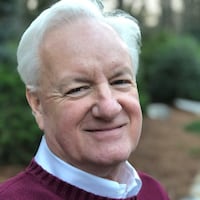Seven of the 11 United States stadiums chosen last week as sites of 2026 World Cup matches, including Atlanta’s, currently have artificial-turf playing surfaces.
All of that turf will be gone, albeit temporarily, in four years.
FIFA, soccer’s global governing body, requires that the World Cup must be played on natural grass, and the 2026 host stadiums with artificial turf have agreed to remove it and convert to grass several months in advance of the tournament.
“We will study very carefully, together with FIFA, how we can handle (that) and make sure we have the best natural grass available, given that we are a stadium with a roof,” Mercedes-Benz Stadium Chief Operating Officer Dietmar Exler said. “Even if the retractable roof is open, sunlight doesn’t get everywhere (on the field). That is one of the high-priority areas for us to focus on.”
Exactly how the conversion will be done remains under consideration, although Exler said large “growing lamps” will be part of the solution. He said FIFA has engaged experts to recommend the best types of grass to use in different stadium environments, considering roofs and other factors.
Also unsettled is how much it’ll cost the hosts to replace turf with grass. The preliminary estimate is about $2 million for Mercedes-Benz Stadium, including installing an underground irrigation system and preparing a sub-surface for the sod.
“We don’t know for sure yet,” Exler said, “but we have a budget number in the low single-digit (millions) – a couple of million.”
Credit: AMBSE
Credit: AMBSE
Early in the design of Mercedes-Benz Stadium, architects and Falcons executives hoped to have natural grass as the building’s permanent playing surface. But by 2013, the year before construction began, it was determined the field wouldn’t get enough sunlight for grass to thrive under the retractable roof.
“The roof opening we have is not big enough … for sufficient sunlight to come in for the grass in the corners,” Exler said.
While Mercedes-Benz Stadium officials are confident of making grass work on a temporary basis in 2026, they remain convinced it is not a long-term option for the stadium. The grass will be removed after the World Cup, and the playing field will go back to artificial turf, Exler said.
In addition to the sunlight/roof issue, the demands of the stadium’s heavy and varied events schedule also argues against natural grass on a permanent basis, he said.
FIFA will require that sod be installed months before the first World Cup match is played on it in June 2026 so that the grass has ample time to take root.
“It’s not set yet, but in the early discussions with FIFA, what we suggested to them and they seem to like –we’re on the same page – is that the grass will be installed in February of 2026, (soon) after the end of the NFL season,” Exler said.
That would mean Atlanta United would play home games early in the 2026 MLS season on natural grass, which Exler said will provide good experience for the stadium grounds crew before the World Cup.
Another challenge will be to keep the grass thriving throughout what the Atlanta bid group hopes will be a monthlong World Cup run here. While FIFA hasn’t decided how many matches or what level of matches each of the 16 host cities across the U.S., Canada and Mexico will get, Atlanta is seeking to host games early and late in the tournament, spanning from early June to early July.
“It's not set yet, but in the early discussions with FIFA, what we suggested to them and they seem to like – we're on the same page – is that the grass will be installed in February of 2026, (soon) after the end of the NFL season."
Mercedes-Benz Stadium replaces its artificial turf about every two years, most recently in February. When it next does so, likely in 2024, it’ll probably begin to prepare for grass by installing the underground irrigation system, Exler said.
FIFA underscored the importance of the playing surface during a tour of Mercedes-Benz Stadium last fall.
“We need to transform the pitch surface from the artificial into an absolute world-class grass,” Colin Smith, FIFA’s chief tournaments and events officer, said at the time. “There is lots of technology that exists these days. We just need to get it right.”
Natural grass hasn’t been attempted in Mercedes-Benz Stadium for any event since its 2017 opening. But at the stadium’s predecessor, the Georgia Dome, grass temporarily replaced the artificial turf on more than a half-dozen occasions for international soccer matches, albeit in a briefer and less sophisticated way than will be required for the World Cup.
The first time was for a Mexico-Venezuela match in 2009. A contractor laid 4-by-8-foot grass sections after Dome personnel installed a thick layer of plastic and two layers of plywood atop the artificial turf. But the grass sod was in place for only a few days, then was removed and reinstalled for another soccer game a month later.
Other U.S. stadiums that will have to replace artificial turf with natural grass for the 2026 World Cup are AT&T Stadium in Arlington, Texas; Gillette Stadium in Foxborough, Mass.; Lumen Field in Seattle; MetLife Stadium in East Rutherford, N.J.; NRG Stadium in Houston; and SoFi Stadium in Inglewood, Calif.
Credit: Curtis Compton / Curtis.Compton@ajc.com
Credit: Curtis Compton / Curtis.Compton@ajc.com
About the Author
Keep Reading
The Latest
Featured



